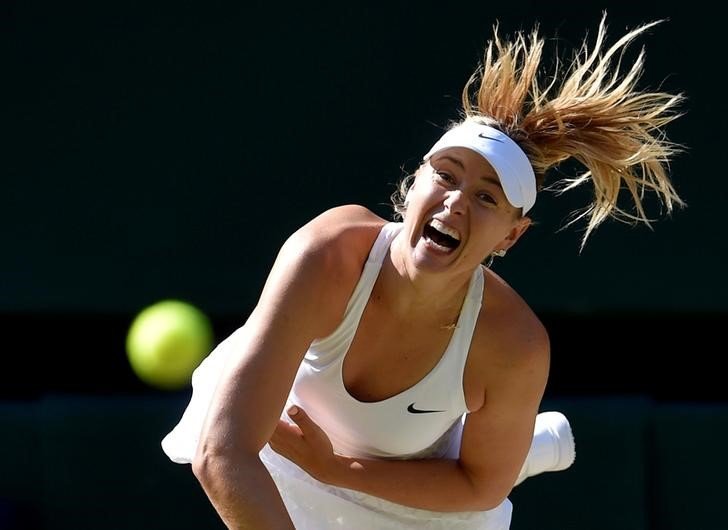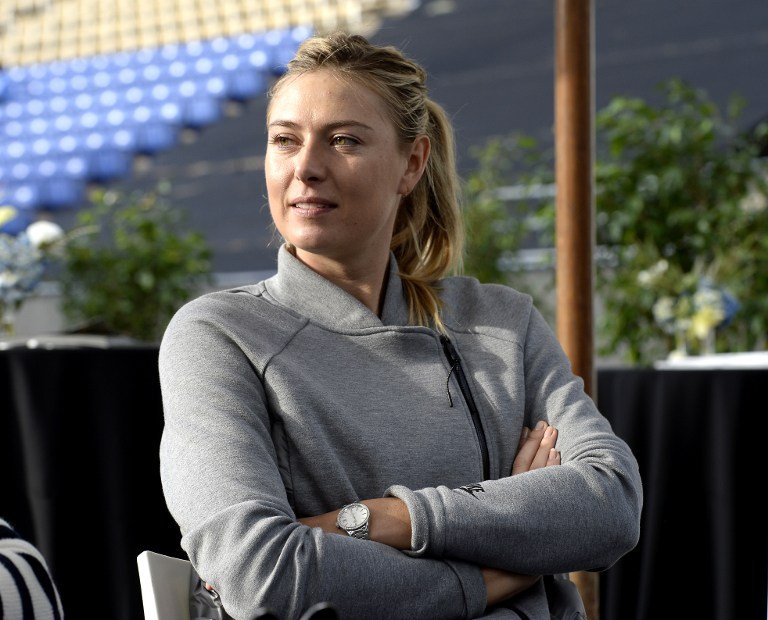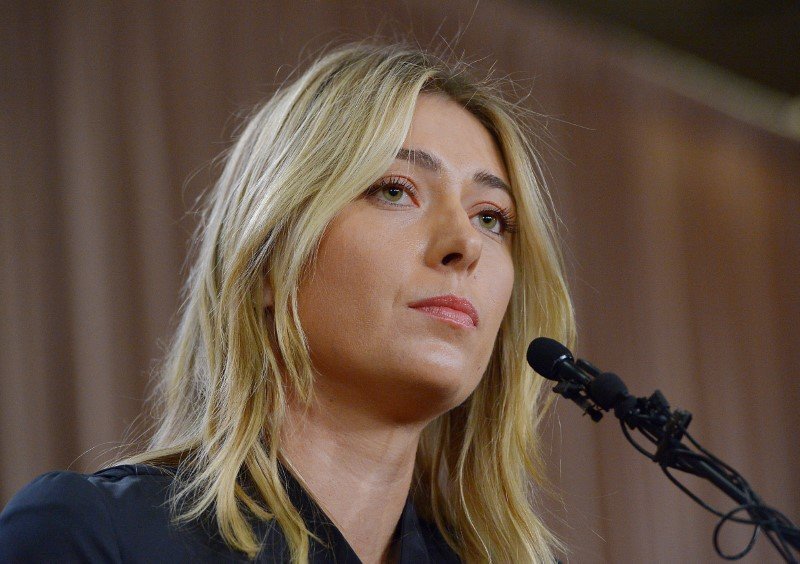From the shadow of Chernobyl’s nuclear wasteland to international super-stardom and from penniless arrival in the United States, without a word of English, to a fortune of USD 200 million.
It may sound like the stuff of Hollywood dreams, but the story of Maria Sharapova is a testament to the power of one individual to make it, whatever the odds, whatever the controversy, whatever people think.
Tomorrow in Stuttgart, the 30-year-old will return from a 15-month doping suspension to open the next chapter.
When she takes to the court to face Roberta Vinci, it will be to the consternation of many opponents and the relief, albeit privately, of a women’s tour left flagging by the absence of Serena Williams, probably Sharapova’s only serious rival in the arena-filling business.

Sharapova shot to international fame as a giggly 17- year-old Wimbledon winner in 2004 — the third youngest player to conquer the All England Club’s famous grass courts.
She would go on to win the Australian and US Opens while claiming two titles at the French Open, despite famously likening her movement on Roland Garros’s crushed red brick to a “cow on ice”.
Siberia-born Sharapova first picked up a racquet at the age of four in Sochi, where her Belarus-born parents had settled after escaping the deadly clutches of the 1986 Chernobyl disaster.
Spotted by Martina Navratilova, she was encouraged to move to Nick Bollettieri’s Florida academy, the proving ground of Andre Agassi and Monica Seles.
Father Yuri and the seven-year-old Maria left for the US in 1994 with just USD 700 to their names.

Yuri took odd jobs like dishwashing to finance his daughter’s dreams although visa restrictions meant mother Yelena was back in Russia, separated from her daughter for two years.
When Sharapova was nine, the mighty IMG group spotted her talent and funded the USD 35,000 fees required for the Bollettieri school.
She made her professional debut at 14 in 2001 and by 2003 reached the world top 50. She won her first tour titles in Japan and Quebec. Then in 2004, her Wimbledon final triumph over Williams made her an overnight international celebrity.
One year later, she became the first Russian woman to be ranked number one in the world while, in 2006, she won her second major at the US Open.
Her 2014 French Open title was another high after a dispiriting injury low.
More injury troubles followed before the bombshell announcement of her positive test for meldonium at the 2016 Australian Open — where she fell in the quarter-finals to Williams, her last match before her suspension.

And while Sharapova may have been unlucky in love, but Sharapova hit the jackpot in her commercial affairs.
She made almost USD 30 million in 2015, according to Forbes, with USD 23 million of that coming from endorsements and once signed a contract extension with Nike worth a reported USD 70 million.
“Beauty sells. I have to realise that’s a part of why people want me. I’m not going to make myself ugly,” she said.
She owns luxury homes — one in Florida, one in California — and is making a lucrative career as an entrepreneur.
In 2012, she launched her own line of candy, ‘Sugarpova’, and during her suspension, signed up for a Harvard Business School course.
But she insists that retirement was never an option despite her absence meaning her world ranking has disappeared, leaving her at the mercy of wildcards into tournaments.
Those free-passes have irked many of her contemporaries already suspicious of the Russian’s aloofness.
“I know I am respected,” says an unconcerned Sharapova.

















